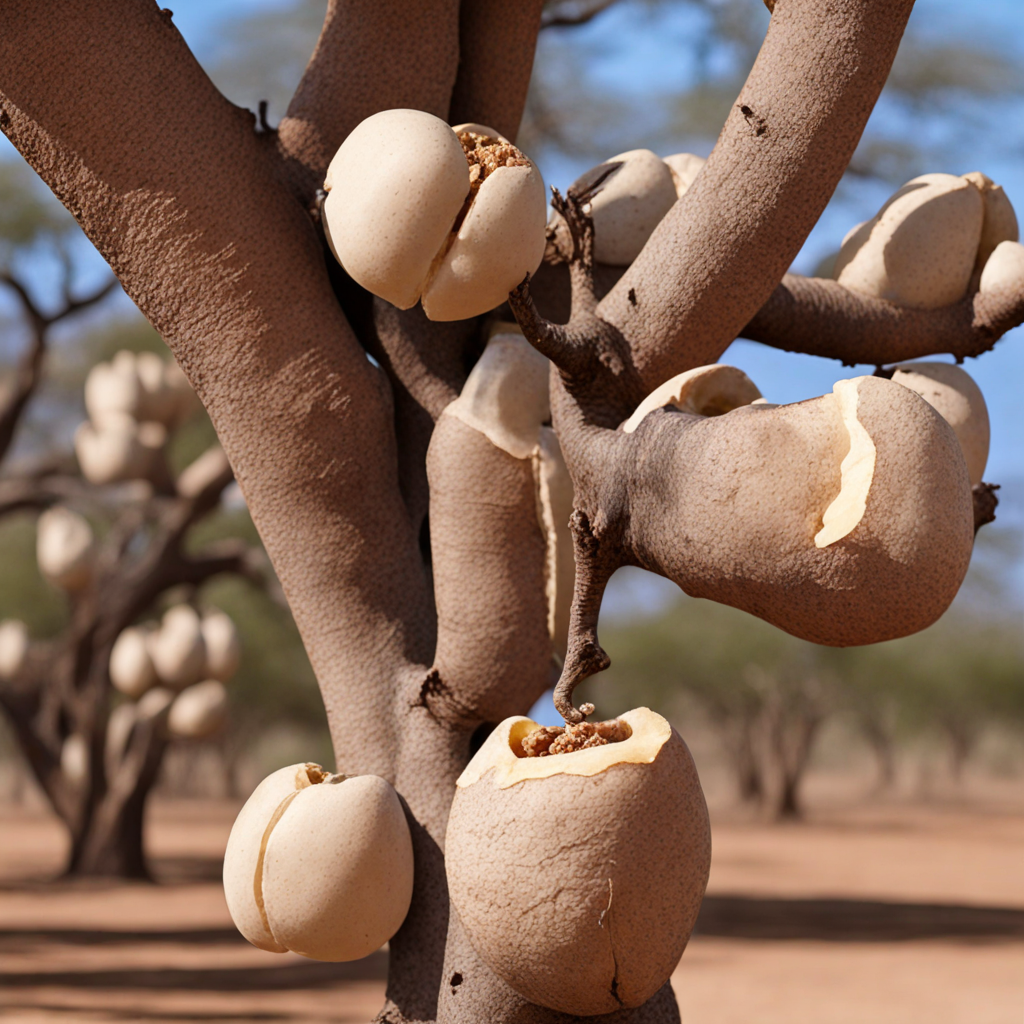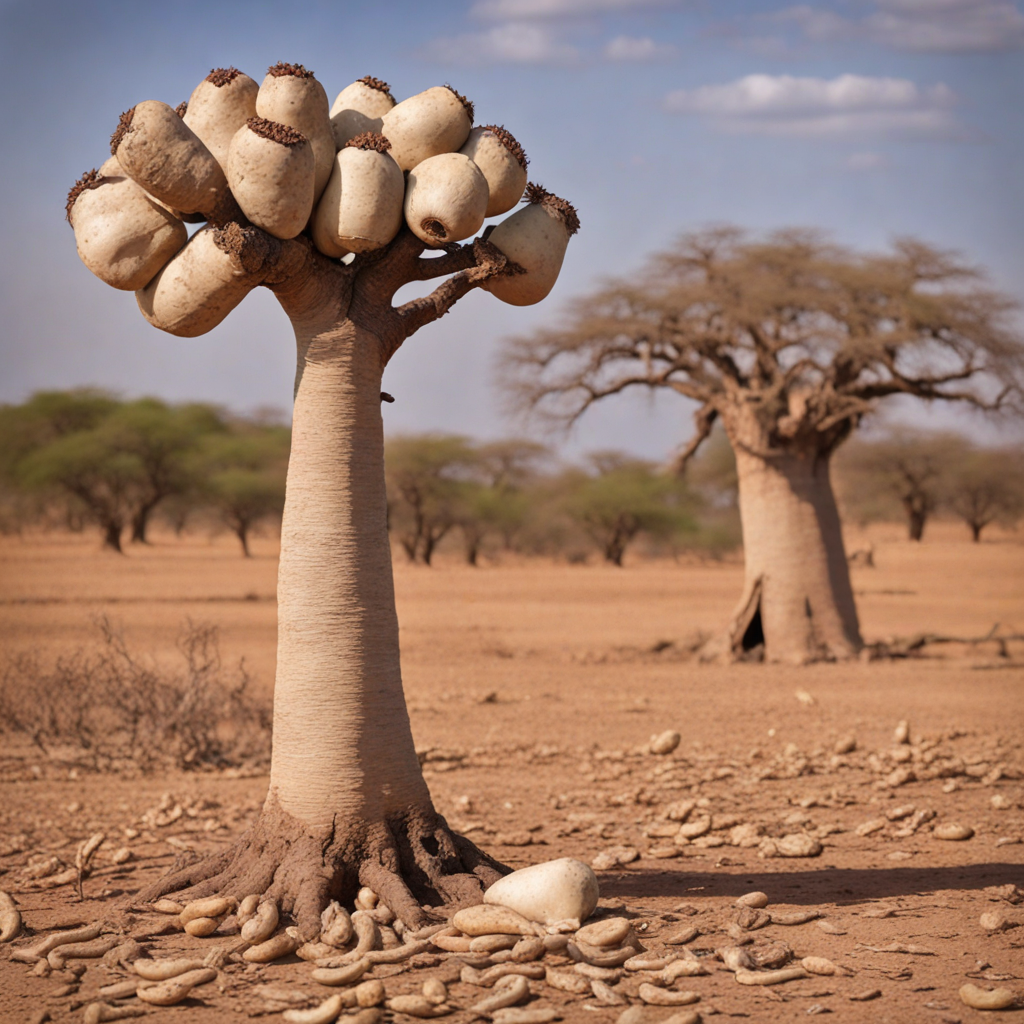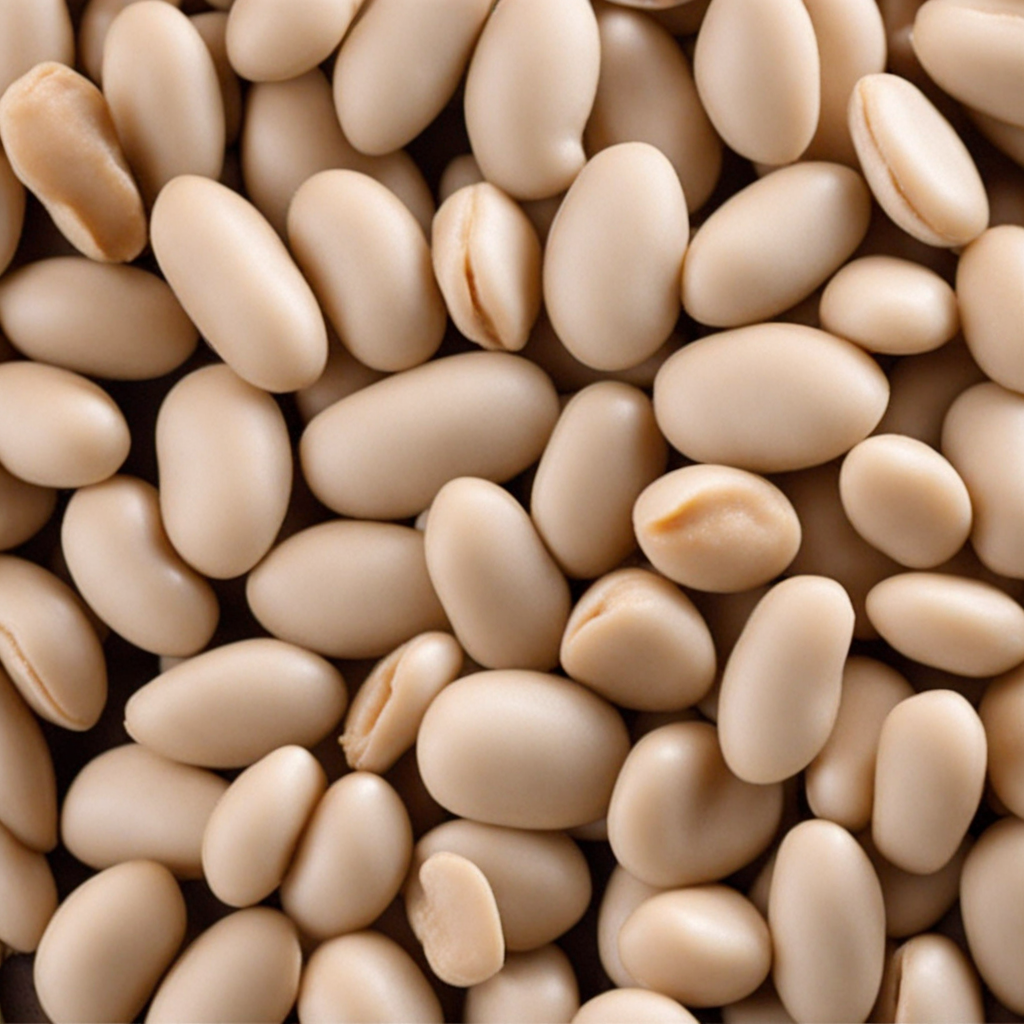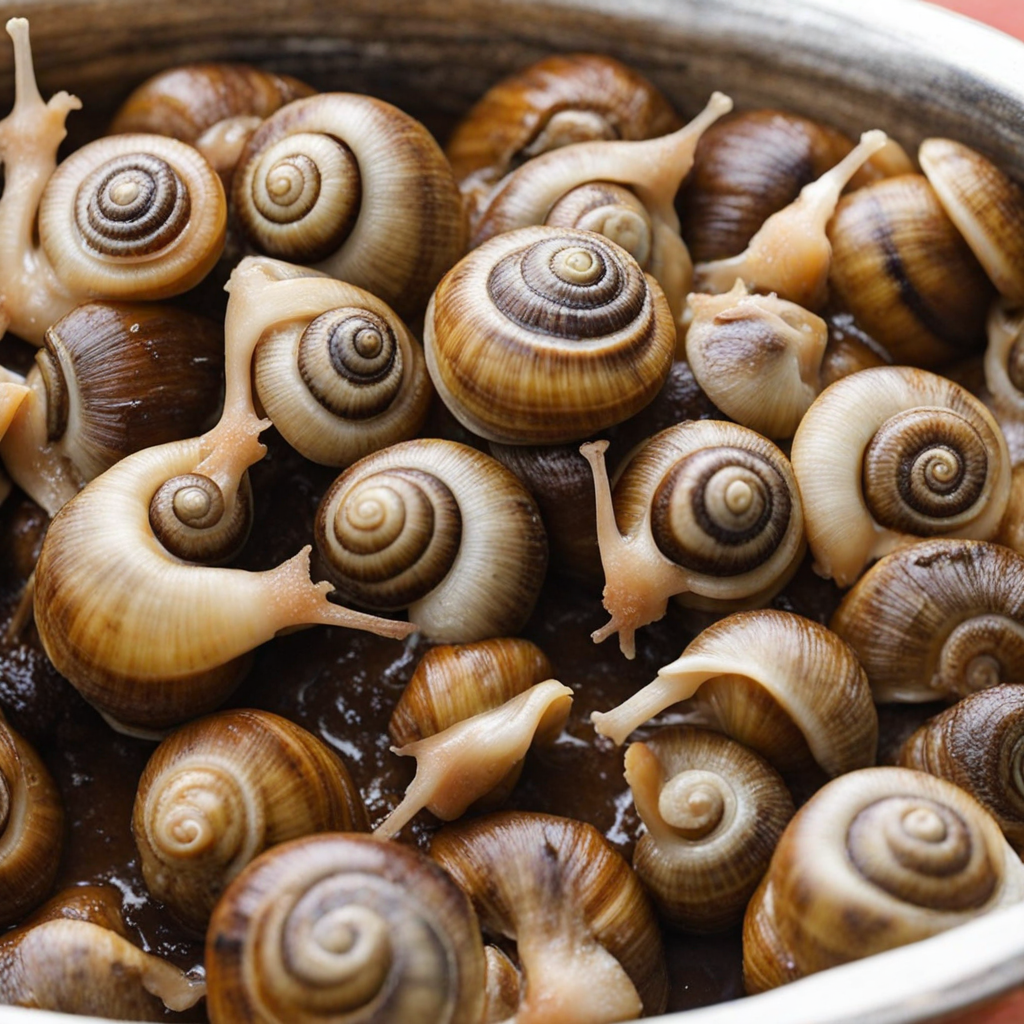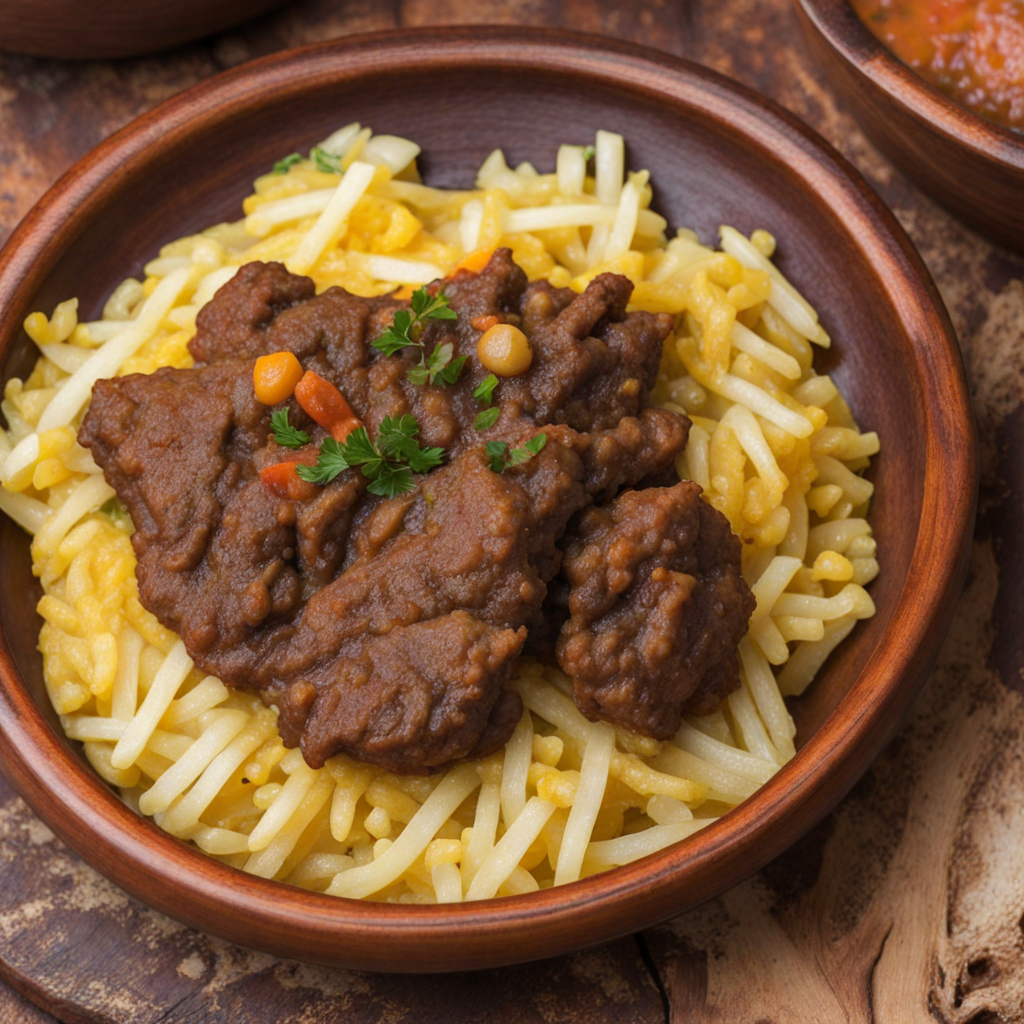Baobab Fruit
Baobab fruit, often referred to as "monkey bread," is a unique and exotic delicacy native to Zimbabwe, known for its distinct flavor and impressive nutritional profile. The fruit grows within the large, woody pods of the baobab tree, which is sometimes called the "Tree of Life." When opened, the fruit reveals a dry, white powdery pulp that has a slightly tart and citrus-like taste, reminiscent of a mix between lychee and grapefruit. This refreshing flavor makes it a versatile ingredient, perfect for adding a zing to smoothies, juices, or even baked goods. The baobab fruit is not only delicious but also packed with health benefits. It is rich in vitamin C, antioxidants, and dietary fiber, making it a fantastic addition to a balanced diet. In Zimbabwe, it is often consumed in various forms, including powdered, mixed into porridge, or used to make traditional drinks. Its tangy flavor profile can enhance savory dishes as well, lending a unique twist to marinades and dressings. Exploring the taste of baobab fruit opens up a world of culinary possibilities. Its unique combination of sweetness and acidity can elevate any dish, whether enjoyed on its own or incorporated into recipes. As a staple in Zimbabwean cuisine, baobab fruit is a delightful way to discover the rich flavors and traditions of the region, leaving a lasting impression on anyone brave enough to take a bite.
How It Became This Dish
The Rich History of Mawuyu: A Culinary Gem from Zimbabwe Introduction Mawuyu, also known as baobab fruit, is a cherished food item in Zimbabwe and other parts of Africa. This unique fruit, which grows on the iconic baobab tree (Adansonia digitata), is celebrated not just for its nutritional benefits but also for its cultural significance. The journey of mawuyu from its origins to its place in contemporary cuisine reflects the interplay between tradition, community, and adaptation that characterizes much of Zimbabwean culinary history. Origins of Mawuyu The baobab tree, often referred to as the "Tree of Life," is native to Madagascar, mainland Africa, and the Arabian Peninsula. In Zimbabwe, the tree is revered not only for its striking appearance—often described as having an upside-down shape, with a thick trunk and sparse branches—but also for its myriad uses. The fruit of the baobab tree, which appears in large, hard-shelled pods, has been consumed for centuries, with some historians suggesting that its use dates back to ancient civilizations. Mawuyu is harvested from these pods, which contain a powdery white pulp that is rich in vitamin C, antioxidants, and dietary fiber. The indigenous Shona people of Zimbabwe have long recognized the nutritional value of this fruit, incorporating it into their diets as a source of sustenance and medicinal properties. Cultural Significance In Zimbabwe, mawuyu holds a profound cultural significance. Traditionally, the fruit is associated with community gatherings and celebrations. It is often consumed during festive occasions, where it is shared among family and friends, symbolizing unity and togetherness. The act of sharing mawuyu reflects the broader communal values embedded in Zimbabwean culture, where food acts as a bridge for social connection. Moreover, mawuyu is also intertwined with traditional medicine. The fruit's pulp is believed to possess healing properties, and it is used in various natural remedies. Communities have utilized mawuyu to treat ailments such as fevers, diarrhea, and even skin conditions. This medicinal aspect underscores the deep-rooted relationship between Zimbabweans and their natural environment, where local flora is integral to both culinary and health practices. Development Over Time The evolution of mawuyu in Zimbabwean cuisine illustrates the broader narrative of food adaptation and resilience. Historically, the fruit was mostly consumed in its natural form, with villagers often eating the pulp directly or mixing it into porridge and other traditional dishes. As globalization and urbanization began to influence food practices, mawuyu adapted to new culinary contexts. In recent years, there has been a resurgence of interest in mawuyu, driven by a growing awareness of health and wellness. As the global food landscape shifts towards natural and nutritious ingredients, mawuyu has found its way into modern diets beyond traditional consumption. It is increasingly being incorporated into smoothies, energy bars, and even baked goods, as chefs and food enthusiasts experiment with its tangy flavor and health benefits. The rise of the health food movement has also led to the commercial cultivation of baobab trees, and mawuyu is now being marketed internationally. This commercialization has allowed for greater accessibility to the fruit, enabling more people to experience its unique taste and nutritional profile. However, it also raises questions about sustainability and the preservation of traditional practices, as local producers navigate the complexities of global markets. Culinary Uses and Preparation Mawuyu can be enjoyed in various ways, reflecting the creativity and adaptability of Zimbabwean cuisine. Traditionally, the pulp is extracted from the pods and can be eaten fresh, often mixed with other ingredients to enhance its flavor. It can also be dried and ground into a powder, which serves as a versatile ingredient in cooking and baking. This powder can be added to porridge, used in smoothies, or sprinkled on salads for an added nutritional boost. Moreover, mawuyu is often incorporated into traditional drinks, known locally as "mukaka," where the pulp is mixed with water, sugar, and sometimes other fruits to create a refreshing beverage. This drink is especially popular during hot seasons, providing a natural source of hydration and nourishment. Contemporary Relevance Mawuyu's resurgence in contemporary cuisine speaks to a broader trend of valuing indigenous ingredients and traditional knowledge. As Zimbabweans and others around the world seek to reconnect with their culinary roots, mawuyu stands as a symbol of this movement. Local chefs are increasingly using the fruit in innovative ways, celebrating the rich flavors and nutritional benefits it offers. In addition, mawuyu has gained recognition in the realm of food activism, as advocates promote the importance of preserving traditional food systems and biodiversity. By highlighting the significance of mawuyu and other local foods, these efforts aim to foster a deeper appreciation for Zimbabwe's culinary heritage and encourage sustainable practices. Furthermore, the global interest in superfoods has positioned mawuyu as a valuable addition to health-conscious diets. Its high vitamin C content and antioxidant properties have attracted attention from nutritionists and health enthusiasts alike. As a result, mawuyu is now being marketed in health food stores and online platforms, allowing it to reach a wider audience beyond Zimbabwe. Conclusion The history of mawuyu is a testament to the resilience of Zimbabwean culture and its relationship with food. From its origins in traditional communities to its contemporary adaptations, mawuyu embodies the spirit of innovation while honoring the past. As it continues to gain recognition both locally and globally, mawuyu serves not only as a delicious and nutritious food but also as a cultural symbol that connects people to their heritage and to each other. In celebrating mawuyu, we are reminded of the profound role that food plays in shaping identities, fostering connections, and nurturing health. The journey of this remarkable fruit is far from over, as it continues to inspire new generations to explore the richness of Zimbabwean cuisine and its enduring legacy.
You may like
Discover local flavors from Zimbabwe


